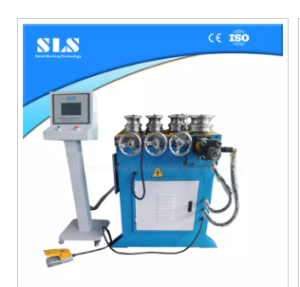Unveiling the Advanced Capabilities of a 3D Pipe Bending Machine
3D pipe bending machines revolutionize pipe fabrication by allowing three-dimensional bending processes that enable more complex and precise pipe structures. These machines cater to a variety of industries, including automotive, aerospace, and construction. Here, we explore the notable features and specifications that set these machines apart.
Key Functionalities and Technologies
Multi-Axis Coordination
A 3d pipe bending machine employs sophisticated CNC technology to manage multiple axes simultaneously. This coordination ensures high precision in producing complex bends, such as those required for automotive exhausts or aerospace components, where accuracy is critical.
Automated Control Systems
The integration of automated control systems in these machines allows for precise adjustments to bending angles, rotations, and push and pull forces. This automation not only enhances accuracy but also increases repeatability, crucial for mass production settings.
Performance Specifications
Efficiency and Production Capacity
3D pipe bending machines significantly reduce the time needed to produce complex pipe layouts. They can execute bends with speeds depending on the complexity of the design and the material used, typically ranging from 10 to 100 millimeters per second.
Power Consumption and Output
These machines are generally equipped with a power capacity of 10 kW to 50 kW. This power directly influences their ability to handle different materials and thicknesses, ensuring versatility across various applications.
Cost Efficiency
The cost of a 3D pipe bending machine can vary widely, typically between $50,000 and $200,000, based on its capabilities and customization. Despite the high initial investment, the reduction in labor costs and the increase in production speeds often justify the expenditure.
Durability and Longevity
Constructed to endure rigorous use, these machines boast a life expectancy of around 30,000 to 40,000 hours, assuming proper maintenance. Regular servicing, which includes lubrication and replacement of parts prone to wear and tear, helps maintain optimal performance.
Dimensions and Weight
The size of 3D pipe bending machines can be substantial, often requiring significant floor space within a facility. Typical dimensions are about 5 meters by 2 meters, with a weight that can exceed 5000 kilograms, necessitating a solid foundation and ample installation space.
Advantages and Material Compatibility
3D pipe bending machines are not limited to bending metallic materials; they can also handle composite materials, expanding their utility across different sectors. The main advantage of using these machines lies in their ability to produce geometrically complex pipe layouts without compromising the integrity or aesthetics of the material.
In conclusion, 3D pipe bending machines provide unparalleled capabilities in pipe fabrication, marked by their precision, efficiency, and versatility. These machines are essential in industries where complex, three-dimensional bending is required, proving themselves as critical assets in modern manufacturing processes.
